The past few years have been characterised by major uncertainties and crises. Inflation is just one example. In times like these, consumers tend to favour private labels. What does this mean for the brand?
Andreas Mack: Generally speaking, there is a trend towards private labels growing. But if you have a strong brand, always deliver quality, innovate - and innovate sustainably - then you are well positioned for the competition. We do this not only with a strong brand and innovations, but also with consistently very high product quality.
Tesa has actually become a generic term. It's a particular challenge to fulfil this expectation, isn't it?
We have well over 90 per cent supported brand awareness in Germany. In Switzerland, it's around 85 per cent, and in Austria it's also over 90 per cent. Unsupported brand awareness is also extremely high. Yes, Tesa is a generic term and Tesafilm is our hero product, which of course helps us. But you also have to keep working on this standing through quality, high-quality products and new products - and also through the new brand campaign to create more awareness.
Customers need to know what ranges are available. Even in Germany, very few consumers are familiar with the entire product range. They know about sellotape, perhaps a packing tape and maybe the adhesive nail or the Power Strips. In recent years, we have invested heavily in the further development of the consumer brand with the aim of increasing awareness and focussing on new products. And I can say that this has been very successful.
It allows us to expand the brand to include things for which we may not have the core expertise or for which we still have to develop it. How great is the risk of the brand being diluted as a result?
Of course, we always endeavour to listen carefully to what the consumer wants and to understand them precisely. Which products work and are easy to apply - and secondly, do they fit the brand? We analyse this very, very meticulously. We only decide whether to develop new segments once we have enough data. That's what we did in the case of the new kitchen and Tesa Wall ranges. In the case of the kitchen range, we had the advantage that the technology already existed, namely the Power Button for bathroom accessories since Tesa took over ‘Never drill again’. We transferred this and advertised it in the same way. DIY customers have already learnt this to some extent.
So they will already be paying close attention to the extent to which the strength of the brand is transferred to these new product ranges.
Exactly, we regularly measure KPIs. We are meticulously tracking the new brand campaign on TV and digitally. We have also analysed our influencer campaign and can see that the brand campaign is already working very well. This is particularly evident with our new kitchen range, which we have now launched at a large DIY store chain. Here, too, we receive the data; we also see all the data from our own web shop and can analyse exactly how the advertising is working and what the conversion rate is.
All in all, the campaign is going extremely well. Of course, everyone expected this, but it is going two or three times better than we expected. This applies to both the brand campaign, i.e. the umbrella advert that we started running in January, and the adhesive nail advert. The feedback from our DIY customers has also been very positive.
What general trends do you currently see in this industry? Is there also a trend towards the DIY store sales channel?
We continue to focus on brick-and-mortar stores, but also work omnichannel. We are focussing very strongly on the DIY sector because we see that younger people also want to do a lot themselves. Tradespeople are hard to come by and have become extremely expensive. The trend is therefore towards do-it-yourself, which is why DIY stores are extremely important for us.
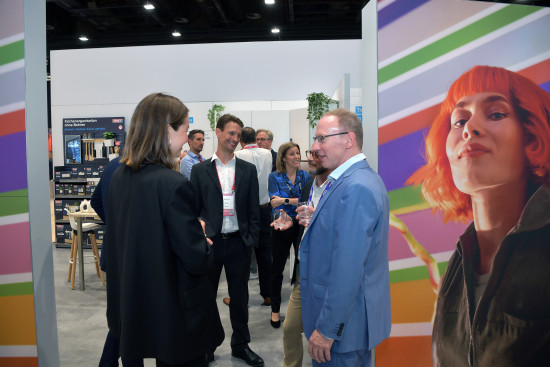
You mentioned the bricks-and-mortar and online business. What are you seeing there?
We are seeing very strong growth both offline and online from the first quarter onwards. This is also due to the fact that we are getting very good placements in the stores - also supported by the new brand campaign. Secondly, we are also seeing growth online, even though the online market is generally not growing as strongly. But we are also performing quite well there. Finally, we also work together with the DIY stores' online platforms and support them. To put it bluntly: we have a clear focus on DIY stores, both online and stationary, and that remains the case.
Tesa presented a number of innovations at the Global DIY Summit. What do you think is the most promising new product? Do you have a favourite?
Difficult - I actually love them all. There are different segments. The trio of innovation, sustainability and new brand campaign is extremely important to us, and it all has to come together.
We have launched more than 30 more sustainable products in the last twelve months. For example, we've also made sellotape more sustainable with the new Eco and Crystal variants. The more sustainable products are really important and a high priority for us.
The topic of sustainability is obviously close to your heart. But Tesa doesn't communicate this particularly aggressively.
We sharpened our sustainability strategy in 2022 and are continuing to work on it at full speed. And of course we are also communicating our progress.
We want to achieve climate-neutral production by 2030 (Scope 1 and Scope 2). Responsible procurement is another of our goals. We want to increase our product sustainability and primarily use recycled and bio-based materials. We are also continuing to promote the circular economy and want to support our customers in achieving their sustainability goals.
We are delving deep into this topic and discussing it with the DIY stores. How can we simplify logistics and make it more sustainable? How can we bundle goods so that we don't always send just one parcel, but perhaps a larger delivery once a week and better coordinate the supply chains? With all these measures, we are increasingly being recognised as a pioneer among DIY stores.
On the other hand, it is already assumed today that a manufacturer also offers sustainable products, isn't it?
Yes, of course. However, our strategy is rather two-pronged: we primarily focus on products with their benefits for the end consumer and emphasise the corresponding sustainability aspects, always on the packaging, of course. For example, we have switched the blister packaging to recycled materials. We have also communicated this prominently. But it is important to me that the product benefits are emphasised first.
Please give us an outlook for Europe. How is brand awareness and distribution looking there?
Our focus is very much on Europe, because there is still a lot of potential there. We are not yet selling certain segments in countries outside the DACH region. Brand awareness there is already good with values between 50 and 80 per cent depending on the country. In some cases, we are seeing significantly stronger growth in these countries than in Germany.
Does it actually help to be a German brand? Is Tesa even identified with Germany?
The majority of our products are ‘Made in Germany’, all our tapes, for example. I've spoken to some DIY store managers and they appreciate it. They recognise the brand, even though it may not be as present in other countries as it is in Germany, and they say that it stands for quality and a long tradition. That's what it always comes down to. The quality has to be good, because we want to convey the principle of ‘the joy of getting it done’, that moment when you have achieved something yourself.
Now I thought you were saying: the Tadaa moment.
That's very important to us because it brings everything to a close and the consumer can say: ‘I've done it with Tesa - tadaa.’

The topic of sustainability is obviously close to your heart. But Tesa doesn't communicate this particularly aggressively.
We sharpened our sustainability strategy in 2022 and are continuing to work on it at full speed. And of course we are also communicating our progress.
We want to achieve climate-neutral production by 2030 (Scope 1 and Scope 2). Responsible procurement is another of our goals. We want to increase our product sustainability and primarily use recycled and bio-based materials. We are also continuing to promote the circular economy and want to support our customers in achieving their sustainability goals.
We are delving deep into this topic and discussing it with the DIY stores. How can we simplify logistics and make it more sustainable? How can we bundle goods so that we don't always send just one parcel, but perhaps a larger delivery once a week and better coordinate the supply chains? With all these measures, we are increasingly being recognised as a pioneer among DIY stores.
On the other hand, it is already assumed today that a manufacturer also offers sustainable products, isn't it?
Yes, of course. However, our strategy is rather two-pronged: we primarily focus on products with their benefits for the end consumer and emphasise the corresponding sustainability aspects, always on the packaging, of course. For example, we have switched the blister packaging to recycled materials. We have also communicated this prominently. But it is important to me that the product benefits are emphasised first.
Please give us an outlook for Europe. How is brand awareness and distribution looking there?
Our focus is very much on Europe, because there is still a lot of potential there. We are not yet selling certain segments in countries outside the DACH region. Brand awareness there is already good with values between 50 and 80 per cent depending on the country. In some cases, we are seeing significantly stronger growth in these countries than in Germany.
Does it actually help to be a German brand? Is Tesa even identified with Germany?
The majority of our products are ‘Made in Germany’, all our tapes, for example. I've spoken to some DIY store managers and they appreciate it. They recognise the brand, even though it may not be as present in other countries as it is in Germany, and they say that it stands for quality and a long tradition. That's what it always comes down to. The quality has to be good, because we want to convey the principle of ‘the joy of getting it done’, that moment when you have achieved something yourself.
Now I thought you were saying: the Tadaa moment.
That's very important to us because it brings everything to a close and the consumer can say: ‘I've done it with Tesa - tadaa.’

 Menü
Menü




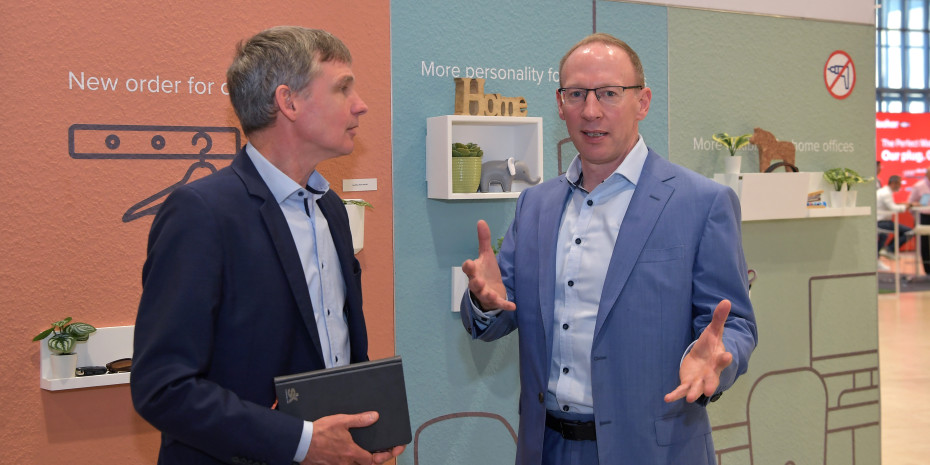
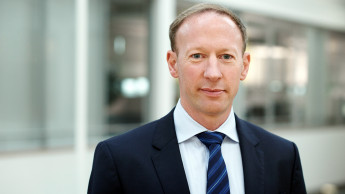
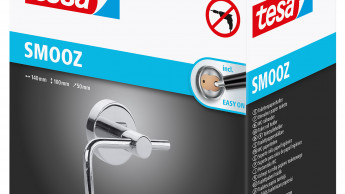

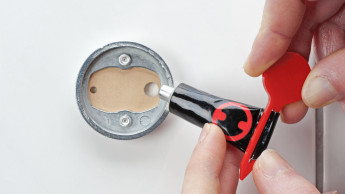

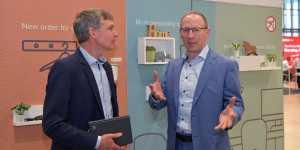


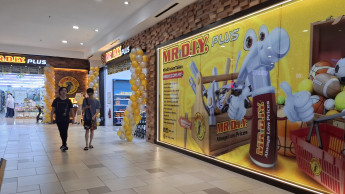
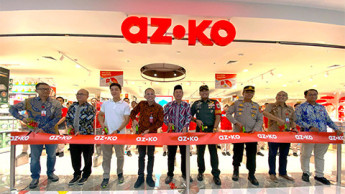
 Newsletter
Newsletter